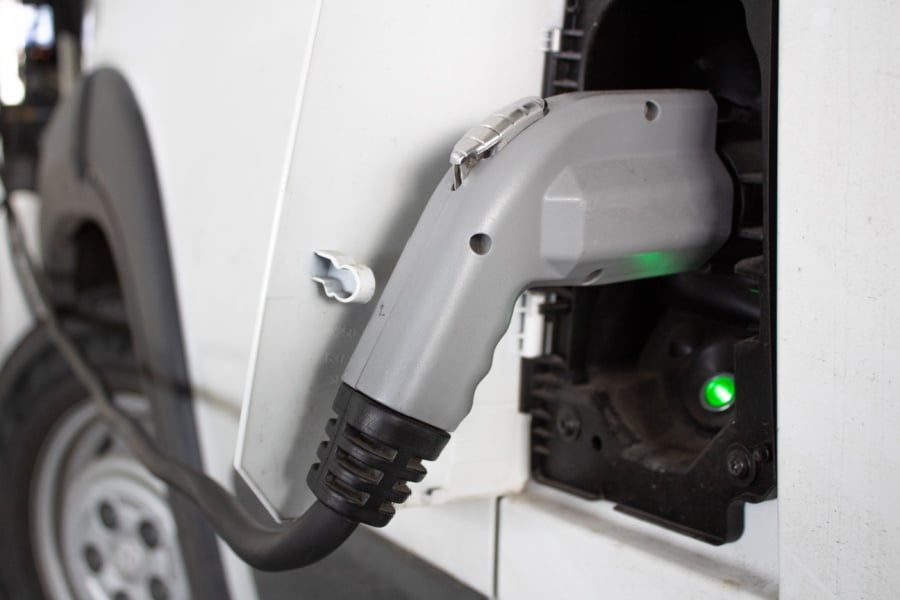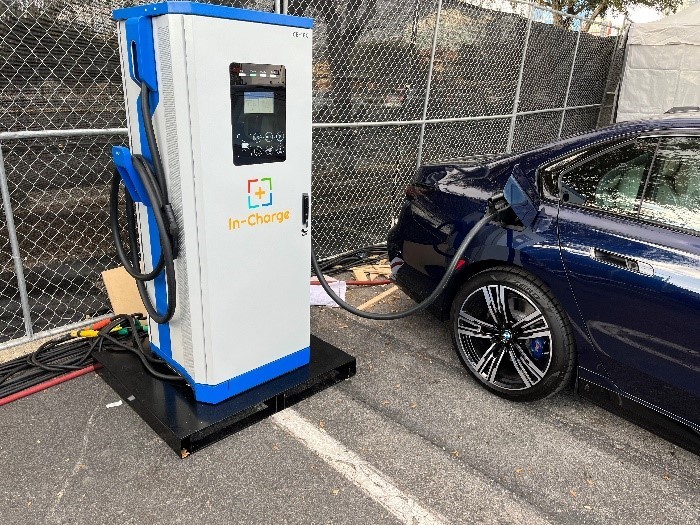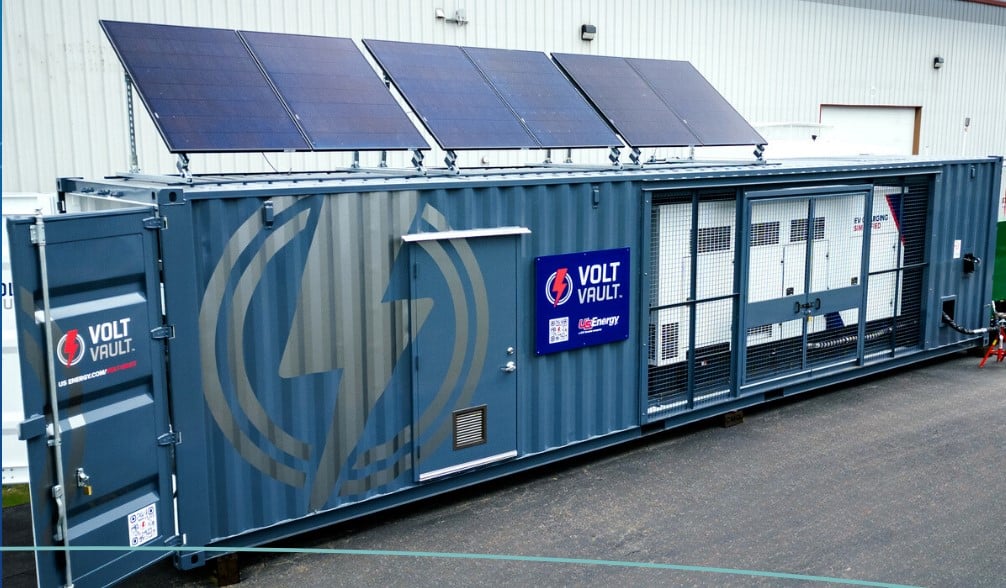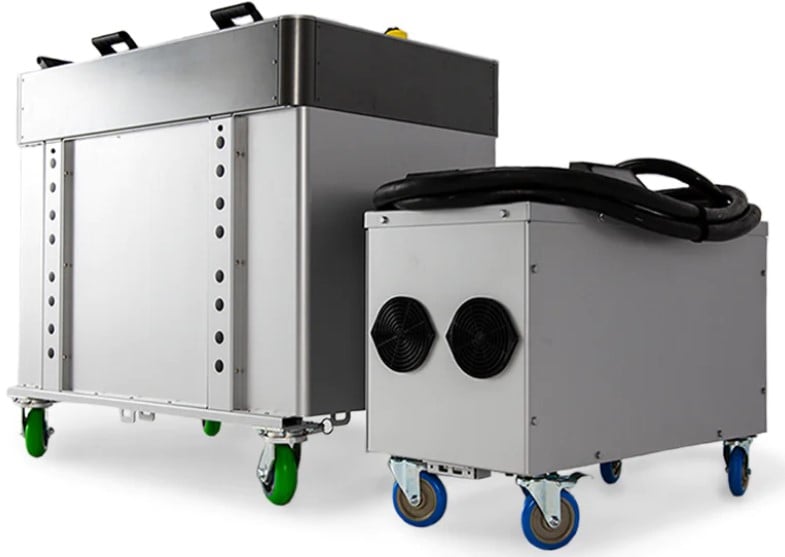Logística de Transporte
Industrias

Electric vehicle (EV) technology is rapidly advancing, but one critical piece of the puzzle—charging infrastructure—can still pose challenges, especially for medium and heavy-duty electric vehicle (MHD EV) fleets. Many fleet operators are facing gaps in commercial EV charging infrastructure that risk slowing down operations and compromising productivity. Temporary and mobile charging solutions, however, can offer a flexible, effective workaround, enabling you to maintain and even enhance your EV operations while more permanent infrastructure is developed. Please consult with your facilities and operations departments to determine which solutions may be available in your area and best suited for operations at your site.
In this guide, we’ll explore three types of mobile and temporary charging solutions for MHD EVs. We’ll look at the specific use cases for each, as well as key factors like power requirements, setup, mobility, and product availability. By the end, you’ll have a clearer picture of which solution might work best for your fleet’s needs and constraints.
Overview of Temporary and Mobile Charging Solutions
When considering mobile charging solutions, there are three main types:
1. DC Charger Mounted on a Skid, Jersey Barrier, or Cart ("Mobile Mounted")
2. DC Charger Integrated with a Large Battery or Generator ("Generation Integrated")
3. DC Charger with a Small Battery on a Mobile Platform ("Small Mobile Battery")
Each solution offers unique benefits for different operational scenarios, from sites with ample power supply to those without any power infrastructure. To make an informed decision, assess how each option matches your site's needs in terms of vehicle support, space, power requirements, and operational flexibility.
Comparison
| Charger Type | Temporary or Mobile | Charging Speed | Battery Life | Power Draw | Market Availability | Best For: |
| Mobile Mounted | Temporary/Semi-Temporary | 120-350kW | N/A | 30-350kW | Existing | Continous use with power supply |
| Generation Integrated | Semi-Temporary | 80-200kW | 100-500Wh, or alternative fuels |
0-25kW (AC) 0-80kW (DC) |
In production, some lead time expected | Single discharge long term recharge |
| Small Mobile Battery | Mobile | 100kW | 70kWh |
N/A available through CaaS |
Existing | Mobile and emergency situations |
Key Considerations for Choosing a Charging Solution
To choose the best temporary or mobile charging solution, consider the following questions:
1. Operational Duration: How long do you need the temporary solution in place?
2. Power Capacity: Is there adequate onsite power, or will you need an integrated generation solution?
3. Space Requirements: How much physical space is available for the charging units?
4. Mobility Needs: Does your fleet require chargers that can move around the site or between locations?
5. Lead Time and Availability: When do you need the solution operational, and are production timelines compatible with your needs?
Please note: Compatibility between your vehicles and any charging solution is crucial. Before finalizing your decision, consult with your EV and charger manufacturers to ensure interoperability.
Mobile Mounted
Mobile Mounted chargers can allow for easy installation with limited permitting, trenching, or extra construction. These solutions are a potential solution when power is available on site or can be paired with a separate power generation solution.
Most similar to a permanent charging solution, the Mobile Mounted solutions are great for operations with multiple MHD EVs needing consistent charging from a low number of chargers and that have appropriate space on site. The Mobile Mounted solutions are best suited to a defined central charging depot and can commonly be fit onto medians, shoulders, or in a parking space.
Providers of this solution include InCharge, Merge Fleet, and ChargePoint.

Generation Integrated
Generation Integrated solutions address a situation where power is insufficient or unavailable onsite to support the continuous operation of a Skid Mounted solution. This may be because the site has limited power available or is currently under construction. Battery Integrated solutions range in capacity from 100-500kWh.
Given battery capacity and output constraints, Battery Integrated units are best utilized to supplement existing chargers for MHD EVs and not to replace the entire charging demand. It is best to use Battery Integrated solution with a co-located DC charger on the platform to avoid excess cabling, set up, and ongoing operational support. Battery Integrated solutions occupy up a similar or larger footprint to Mobile Mounted chargers. Battery Integrated chargers may need to be moved more frequently, for their own fueling and therefore should be readily accessible for replacement.
As of October 2024, it is important to note production of many Battery Integrated units are still in initial or planned production phases and may require significant procurement lead times.
Providers of the Battery Integrated solution include US Energy, Pioneer eBoost, Evesco, and PotterEV.

Small Mobile Battery
Small Mobile Batteries, with capacity up to 100kWh, are paired with a mobile platform and DC outlet allow for charging to be brought to dispersed vehicle fleets on a dynamic basis. Due to the high manual input, some of these services are only offered through a charging as a service model (CaaS).
Small Mobile Batteries excel in adding energy to vehicles that have run out of charge during their operation. Small Mobile Batteries are not sufficient to be the primary charging support for MHD EVs on a continuous basis.
Producers of Small Mobile Batteries manufacturers include SparkCharge.

Use Case Comparison
Depending on the power available and the capacity of your site, a temporary or mobile commercial EV charging solution can be a valuable option. Selecting the right charging solution involves matching the expected dwell time of your MHD EVs with the specific use case of the charger. For sites with limited infrastructure, a single temporary charger may need to support multiple vehicles, which can be managed with a Mobile Mounted solution. If the goal is to supplement existing chargers, a Battery Integrated or Small Mobile Battery solution can add flexibility and responsiveness, helping to meet dynamic charging demands as your fleet operates.
Mobile Mounted solutions best simulate permanent charging infrastructure given sufficient power, or generation, and space. The Skid Mounted DC charger can support multiple MHD EVs from a single charger.
Battery Integrated solutions should be considered when power is not available onsite, or if charging can be spaced out to allow for battery recharge between MHD EV charging support.
Small Mobile Battery solutions are more compact and allow for a greater range of operations and ease of charging. However, their battery capacities are smaller and require increased manpower and expense because of the need to have someone move it to and from a charging location.
Please consult with your facilities and operations departments to determine which solutions may be available in your area and best suited operations at your site.
One of the major considerations when evaluating between temporary and mobile charging solutions is the power capacity available on site. The ability to easily connect to and dispense power from a Skid Mounted or Battery Integrated solution can have a large impact on the cost and benefit of these solutions.
The three solutions analyzed here differ greatly in their mobility and ongoing support. While the Skid Mounted solution is similar to a permanent charger in operations and maintenance, the Battery Integrated solution may need to be moved for charging. The Small Mobile Battery solution will likely require high manual labor to move it as necessary and recharge it between uses.
The temporary and mobile EV charging solution market is rapidly expanding with interesting solutions. Some of these solutions are still in early-stage production or pre-production phases. If trying to fill an immediate need, Skid Mounted and Small Mobile Battery solutions are likely to be more plentiful and tested.
Consult with your facilities and operations departments to determine which solutions may be available in your area and best suited operations at your site.